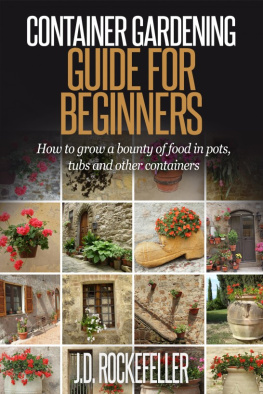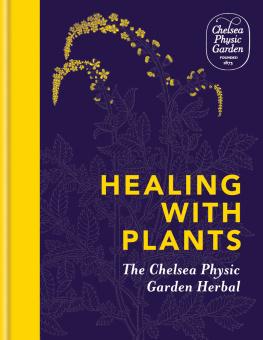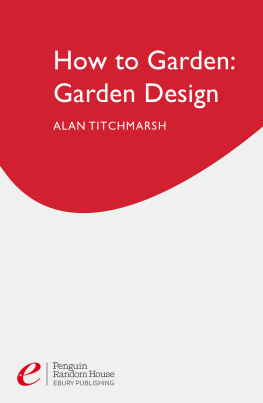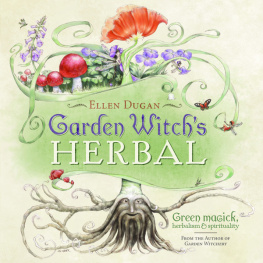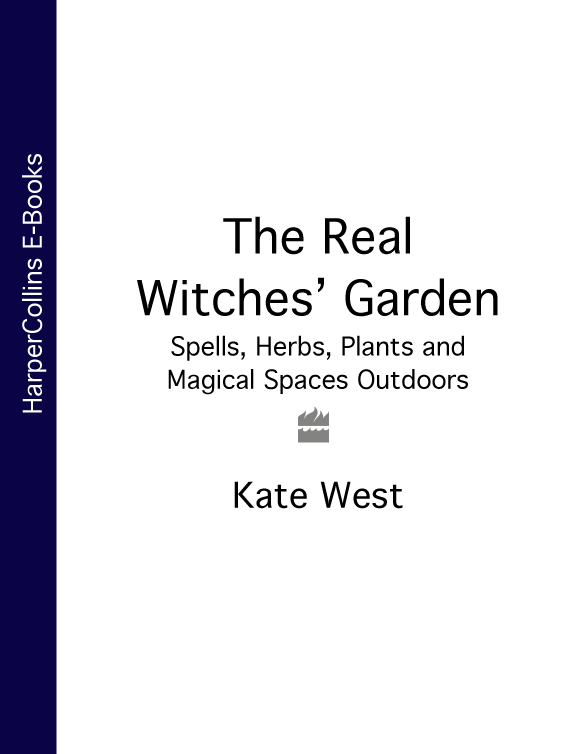ONE
A NATURE-BASED BELIEF SYSTEM

I call on Earth to bind my spell,
Air to speed its passage well.
Bright as fire shall it glow,
And deep as oceans tides shall flow.
Count the elements fourfold,
For in the Fifth the spell shall hold.
Blessed Be.

W hy Witches and gardening? Witchcraft is often described as a nature-based spirituality but what does that mean? Well, early Witches would have worked and tended the land, cared for and healed the people and the livestock. Their daily lives and their magical work would have been for the prosperity and the future of their community. Indeed, it is in part from this that the traditional festivals, the Sabbats, came about. For in amongst the meanings of those festivals is a strong and continuing link to the Wheel of the Year and the seasons which form its basis. For me this was one of the key attractions of the Craft.
One of the ways of looking at the Sabbats is to refer them directly to the passage of the seasons. Very simply we can say that:

Samhain (31 October) marks the start of the resting season and is the harbinger of Winter whilst Yule (21 December) marks the onset of that season. Imbolg (2 February) brings the first buds and shoots rising through the frozen earth as a promise of the Spring which begins in earnest at Oestara (21 March). Beltane (1 May) when the hawthorn blossoms presages Summer and Litha (21 June) marks its beginning. Lughnasadh (1 August) is the first of the harvest, which reaches its height at Madron (21 September), the start of Autumn.

In the Craft we refer to the Sabbats collectively as the Wheel of the Year. In addition, each of these festivals is linked to the yearly cycles of the Goddess and the God. The Triple Goddess moves from Mother to Crone at Samhain, from Crone to Maiden at Imbolg, and from Maiden to Mother at Beltane. The God as her Consort moves alongside her through these changes as well as being the Oak and Holly Kings which preside over the lightening and darkening halves of the year from Yule to Litha and Litha to Yule, respectively.

Not only do we celebrate the passage of the seasons but we draw our magical energy from them; Spring is a time of beginnings, Summer a time of development, Autumn the season of reaping and Winter is the time of rest. Of course from an agricultural perspective, that same seasonality tells us when to sow, tend, harvest and rest the soil. Whether from the perspective of the Witch or that of the gardener, the cycles which Witches celebrate as the Wheel of the Year and the phases of the Moon link everything together. There is a proper time for everything, and everything has its season.
The Magics that Witches work now, as in the past, draw their energies directly from the elements of Air, Fire, Water and Earth, all of which are required to create growth and which, when imbued with the fifth element of Spirit, form the foundation of the Craft as well as our magic. Even the most non-natural magic, such as a working to keep your car on the road, derives its power from the energies of the elements. As the spell at the start of the chapter states, the elements are the key to working magic. Without true knowledge and understanding of them it is not possible to work effective magic or to be an effective Witch. And there is no simpler or more natural way to gain that knowledge and understanding than by working with the elements in their most immediate form. For Witches, these are not just the external elements as seen in nature wind, sun, rain and soil but also the way those elements are part of ourselves and everything we do. Air is our thoughts, Fire our passions and enthusiasms, Water our emotions and Earth our physical selves. Spirit is the essential self as well as the Goddess and the God both within and without. For us to understand and care for ourselves and each other, to develop and grow as individuals, and to work the magics which enhance the lives of our loved ones and our own community, we must harness and balance these elements, both within and without. This is a path of personal exploration, understanding and development which Witches use in all aspects of their daily lives, but perhaps nowhere more so than in their tending of life, whether it be in plants and the soil or in their relationships with family, friends and their wider community of the Craft.
The fifth element of Spirit is personified in the tales, legends and stories of the Goddess and the God, so many of whom are in turn linked to the fertility of the land, the crops, animals and people. From Amalthea, Goddess of plenty, to Zisa of the harvest, the Goddess is inextricably linked to fertility and growth. In her Lunar cycle of Maiden, Mother and Crone we think of her as planting, tending and reaping the life of the people, animals and the land. The God too holds these roles, the Horned God and the Corn King being probably the most obvious examples. There are Gods and Goddesses of sowing and planting, reaping and gathering, and of every kind of plant and animal, from belief systems of almost all times around the world (see to a greater understanding of the cycles of life, death and rebirth than when working with nature.
One of the other traditional key skills of the Witch is that of herbalist and healer. Witches have long been respected for their knowledge of healing plants and herbs, and many of these ancient remedies are being reintroduced into our daily lives now that the remedies of aromatherapy, homeopathy, etc, are becoming more readily available. Most practising Witches and other herbal therapists know, however, that these remedies are always better when they can be home-grown. And this is just another of the reasons why even the most urban of Witches feels the need to have some kind of practical connection with the earth.
There is another facet of the Craft which links practising Witches to the land and that is in the often forgotten relationship between the practise of magic and the payment for it. As the magic of Witches is worked in balance with the energies of the elements, as well as our personal energies, we must also look to returning something in kind. This is not just a question of repaying what we have been given, i.e. when the magic works, but should also take the form of pre-payment for what we might seek in the future. Whilst this can take the form of tending for the people in our lives and generally upholding the principles of the Craft, many Witches, myself among them, advocate actually working towards repaying nature itself. As I have mentioned in my other books, you could go to a local park or beauty spot and remove the debris and litter left by others, put food out for wild birds, or support an animal charity. But one of the most effective ways is to work the soil and to tend plants. Whilst you could do this in a local park or beauty spot, it is far more immediate and personally satisfying if you can do it in your own space, even if that space is restricted to a couple of pot plants on the windowsill.




